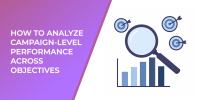Engagement metrics on Facebook—such as likes, shares, comments, CTR, and time spent—are more than vanity numbers. They tell you how effectively your ad connects with your audience. For media buyers, these metrics are essential signals for Facebook ad optimization, budget allocation, and predicting long-term campaign performance.
According to recent industry studies, campaigns that actively monitor engagement metrics and optimize based on them see, on average, a 23% higher return on ad spend (ROAS) compared to those that don’t.
Key Metrics Every Media Buyer Watches
1. Click-Through Rate (CTR)
CTR measures the percentage of users who click your ad after seeing it. Media buyers use CTR to gauge relevance. A higher CTR indicates that the creative and copy resonate with the audience. If CTR is low, it’s often a sign that you need to adjust targeting, refresh creatives, or test stronger calls-to-action.
2. Engagement Rate
Engagement rate reflects how often users interact (likes, comments, shares) compared to impressions. Strong engagement rates usually mean the content is relevant and building trust. Media buyers look for patterns: if engagement is high but conversions are low, the issue might be with the landing page or offer rather than the ad.
3. Cost Per Engagement (CPE)
CPE helps evaluate how efficiently you’re generating interaction. By lowering CPE, media buyers can stretch budgets further. This is where A/B testing and creative iteration become critical in Facebook ad campaign optimization.
4. Frequency
Frequency shows how often the same user sees your ad. While some repetition builds familiarity, high frequency without corresponding increases in engagement is a warning sign of ad fatigue. Experienced buyers use frequency caps and creative refresh strategies to keep performance stable.
5. Video Metrics (Watch Time, ThruPlays)
Typical audience retention curve for Facebook video ads—most drop-off occurs within the first few seconds
For video ads, watch time and thruplays provide deep insight into attention spans. If most viewers drop off in the first 3 seconds, the creative hook isn’t strong enough. Media buyers use these insights to refine storytelling.
Turning Insights Into Action
Interpreting engagement metrics is only useful if it leads to action. Professional media buyers:
-
Reallocate budget to ad sets with higher CTR and lower CPE.
-
Run split tests to isolate which elements (creative, copy, audience) drive engagement.
-
Apply learnings to scale campaigns while controlling Facebook ad costs.
The result is continuous Facebook ad performance improvement and less wasted spend.
Useful Statistics for Context
Average Facebook ad Click-Through Rates (CTR) across industries—legal leads the pack, with retail and apparel close behind
-
Facebook ads with strong visuals generate 2.3x more engagement than text-only ads.
-
Campaigns optimized weekly for engagement report 35% lower CPC compared to those left unmonitored.
-
Ads with video retain attention 5x longer on average than static image ads.
These numbers highlight why understanding engagement metrics isn’t optional—it’s the foundation of Facebook ad targeting and optimization.
Related Reading on LeadEnforce
If you found this article useful, you may also like:
-
Why Audience Research Is the Most Overlooked Step in Facebook Ads
-
Facebook Ad Strategies That Work for Subscription Box Brands
Final Thoughts
Engagement metrics are a window into how your audience perceives your ads. Media buyers don’t just look at the numbers—they read them as signals that guide strategy. By mastering metrics like CTR, engagement rate, and frequency, you can optimize your Facebook ad campaigns with confidence, ensuring every dollar spent works harder toward your goals.

